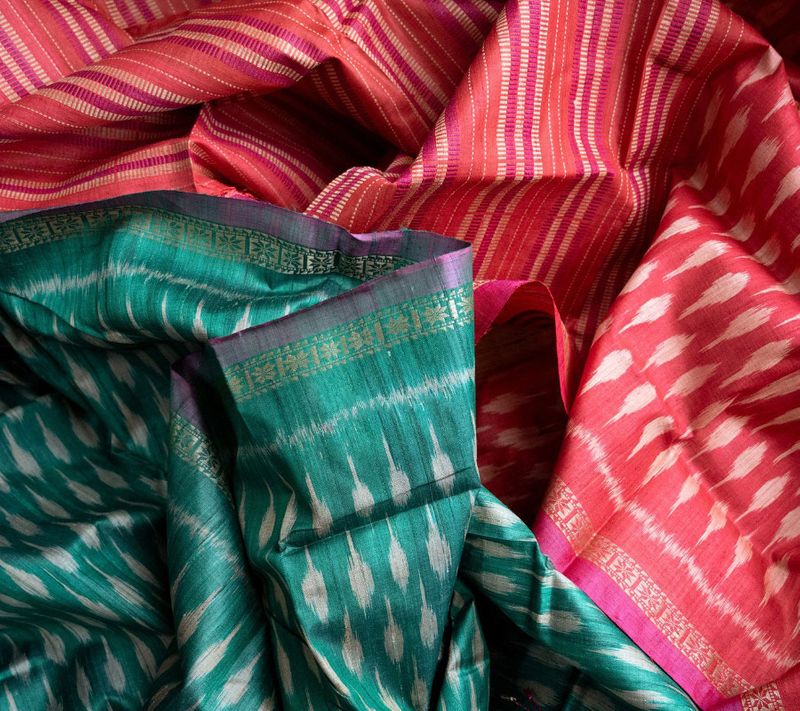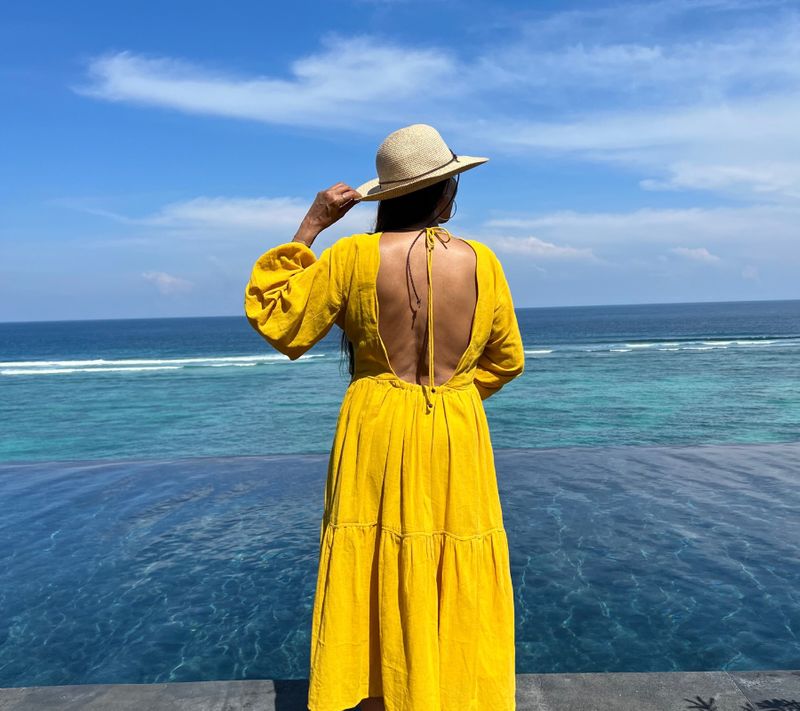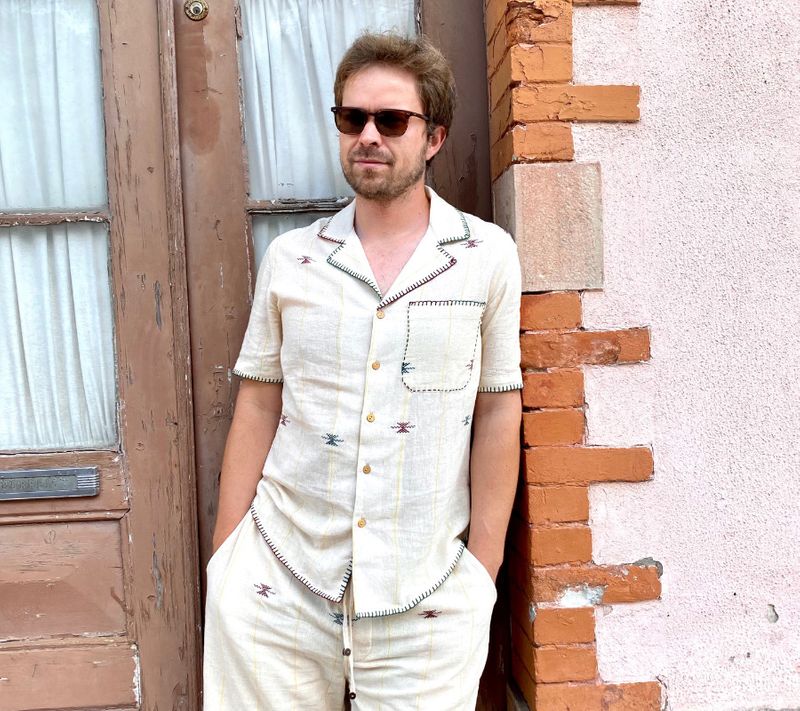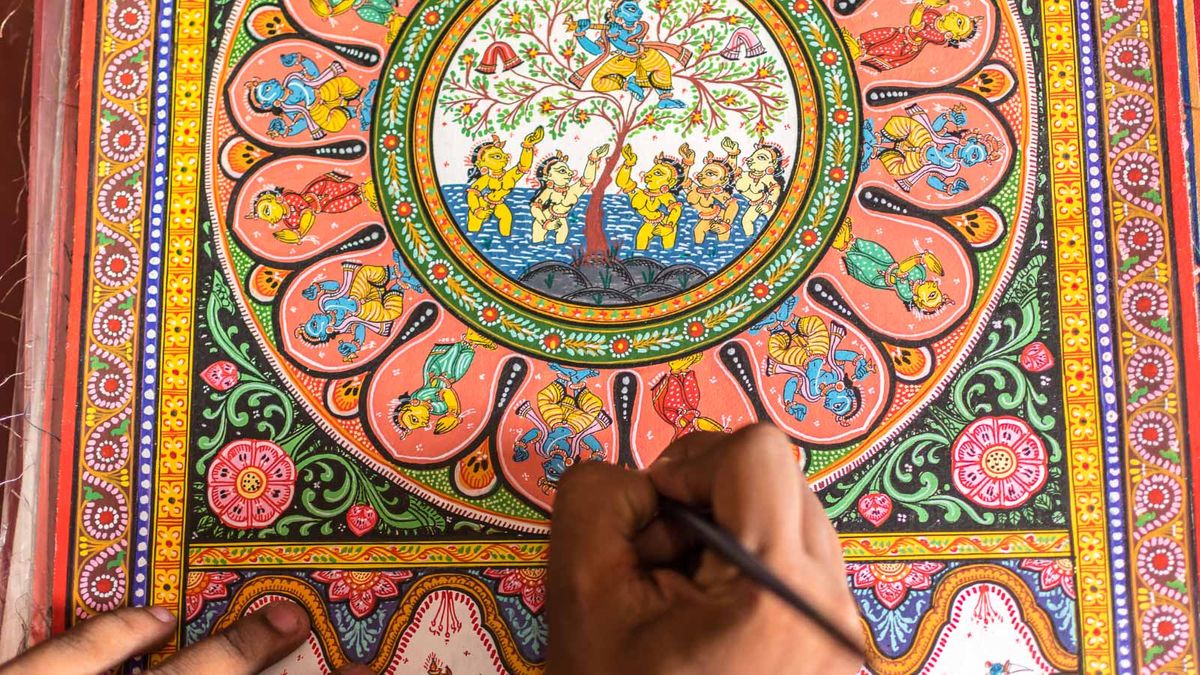Legend has it that in the 12th century when poet Jaydeva composed Geet Govind he got it woven into a long fabric by the weavers of Odisha and presented it to Lord Jagannath. The craft itself—believed to have existed in Odisha since 600 BC—was influenced by the temples of the region. Made originally in colours of the Jagannatha temple (white, black, yellow, and red) Odisha’s handloom is believed to be an ode to the temple architecture—think geometrical formations of ikkat, chakras of Sambalpur, figurines of Bomkai, and you’d know what we mean.
Forever favourite of handloom lovers

Handlooms of Odisha have been endorsed by the rich and common folk alike. Be it Indira Gandhi who had an extensive collection of Odisha handloom saris or contemporary icons like Pratibha Patil, Draupadi Murmu, and Sonia Gandhi, who are often seen in Odisha ikats and Sambalpuris—women across generations and classes have cherished the beauty of Odia handloom. The fabric finds its way into men’s wardrobes too—be it colourful jackets, soft scarves, and elegant dhotis of the yore or chic shirts, dapper kurtas, and cool co-ord set that reign today. The reasons are many: the fabric is easy to wear in the heat, the colours do not fade, and the clothes last forever.
Catering to a new audience
“We have sober designs also, for people like you,” the elderly salesman, too shy to share his name, had told me at Meher’s—one of the leading stores in Bhubaneswar when I visited the city recently. “Big city people now prefer light colours so we make a few such pieces,” he had chuckled, while helping me select a light grey ikat silk—a choice no self-respecting Odia would have approved of a few years ago.

While classic Odia patterns and weaves never go out of style, in the past few years there has been a growing demand for neutral colours and subtle designs. Many young designers who have worked outside and understand the new-age demand have returned to the state to work with weavers and create colours, patterns, and motifs more suited to the urban Indian lifestyle. “The original colour schemes and patterns of Odisha’s fabrics can be very bold for some people,” agrees designer Anupriya Midha, when I talk to her about this changing trend. Anupriya works with weaving clusters of western and northern Odisha to develop tussar and silk saris in soft colours and subtle patterns and runs her own label called Vanivritti in Bengaluru. “My clients often tell me how they love to wear these saris to work, now that they can find them in neutral shades.” Anupriya also feels that toning down colours and designs has opened up a brand new market for the craft. And she is not alone; like her many younger designers are working with kotpad, bomkai, Khandua, Behrampuri and Saktapar weaves to give them a facelift and suit new markets, especially outside the state.
Looking beyond the sari

While saris and fabrics are popular with a mature audience, most young people today prefer modern silhouettes. Even within Odisha, the demand for western and international cuts and fits is at an all-time high. To cater to this, many local brands have started to create modern silhouettes from traditional Odia fabrics. A quick search online throws up at least a dozen brands with options featuring pantsuits, summer dresses, maxis, jumpsuits and co-ord sets—all made from traditional handlooms of Odisha. “People of Odisha are very proud of their textiles, but now even they seek modern rendition of the fabric” observes Tania Khosla Taneja, of Orissa By Tania—a brand that works with traditional handloom fabrics to create modern clothing. Interestingly it was Tania’s own need that birthed the brand. “When I moved to Bhubaneswar eight years ago, I fell in love with the textiles here. I could however not find the silhouette I wanted, so I did what Indians do—bought the fabric and got it tailored to my design. People loved it so much that I decided to retail them.” Today Tania not only retails a chic, contemporary line made with age-old methods but also showcases her creations internationally. “Many youngsters who had shied away from wearing Odisha handloom due to the traditional colours and patterns, are now happily wearing them,” she informs. Her clothes meanwhile are not only popular with young Indians but also NRIs and foreign customers. “I recently exhibited in New York and the response was great. The clothes are breathable, sustainably made, and last a lifetime that also attracts educated buyers.”
A long way to go

While the government and designers are tirelessly working to make the fabric more relevant, the moment of glory for Odisha’s textiles is yet to arrive. “At the national level, we see a lot of designers working with Odisha handloom, but at an international level we need better representation,” says Tania. “There are many government schemes that help weavers but there is no support for designers who want to reinvent the market,” feels Anupriya. On their part though Tania, Anupriya, and many other designers are making an effort to keep up the quality and create a niche for Odisha’s legendary textiles—and that surely is working.



_1659086457722_thumb_300.jpeg)
